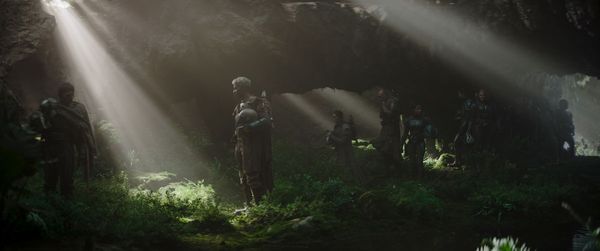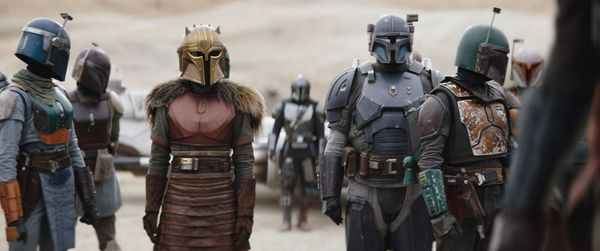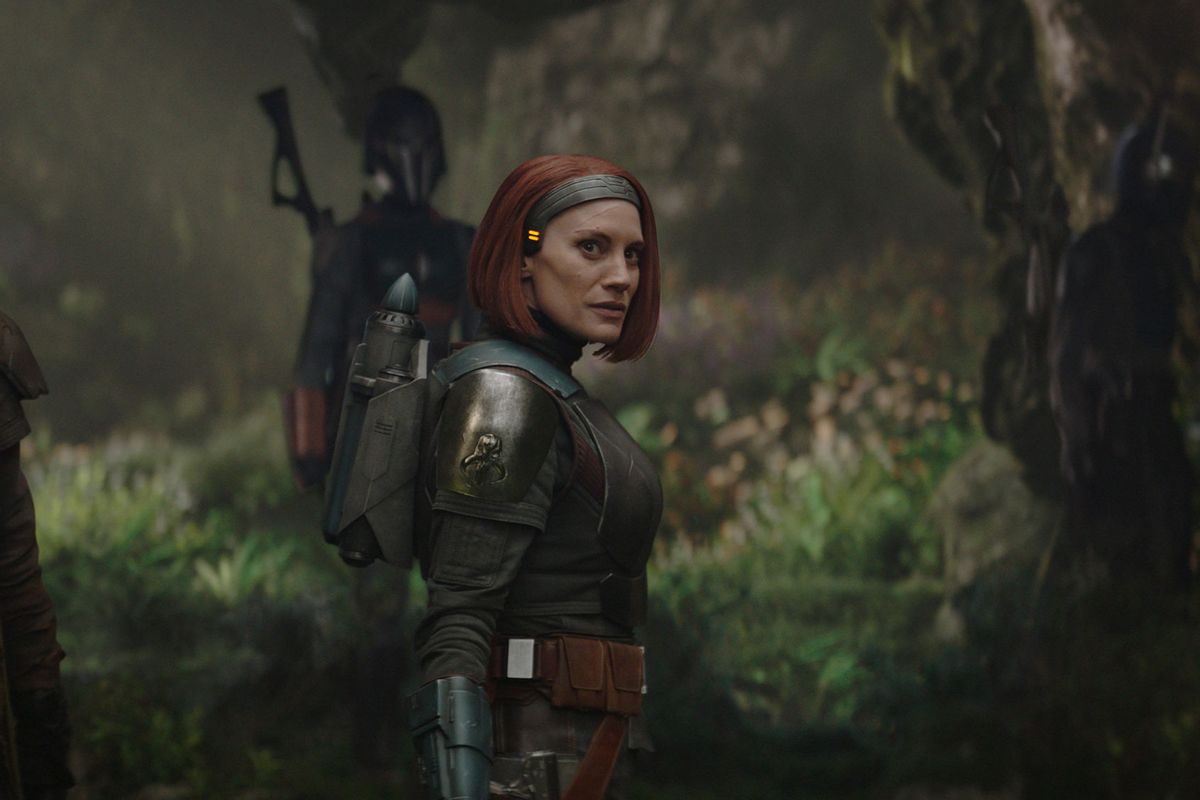A pastoral place of rivers, sweeping cliffs, caves and rich resources. A people maligned and exploited, many forced to leave their homes. We could be talking about Appalachia, the place where I lived for most of my life, where my child was born and where I will always consider home, no matter what my driver's license says. But it's actually Mandalore, the fictional Outer Rim planet that is the once (and maybe future) home of the Mandalorians in a galaxy far, far away.
How far away is it, though? Mandalore of Disney+'s "The Mandalorian" has a lot in common with the region of Appalachia. Both share a history of being used for resources and a tradition of banding together to flourish and fight back. Many Star Wars planets were based on real countries and locations, and the region of Appalachia may provide a blueprint of what happens when you exploit a place — and mistakenly count out its citizens.
The planet Mandalore, seen previously in the animated "The Clone Wars" and "Rebels," takes a big role in Season 3 of "The Mandalorian." It's a character in itself. This season, among the many subplots, finds Din Djarin (Pedro Pascal) desperate to return to his abandoned home planet in order to cleanse himself after he took off his helmet to save Baby Yoda. The things we do for our kids! Only by bathing in the "living waters" of Mandalore can Mando be reborn — and cleansed enough to wear his helmet once more, as some (but not all) Mandalorians do. To Mandalore we go, a planet so allegedly toxic that Mando, who famously hates droids, hires one to be his canary in a coal mine.
Mandalore has a history not only of violence, but of exploitation.
What happened here? People took and kept taking. Wars have been fought on Mandalore. Many Mandalorians were killed in the past, and many more driven from their ancestral planet, so the whole place has an aura of violence, tragedy and bad luck. Space.com describes the planet as "war-torn," writing that its "history is long and troubled even if we limit ourselves to the post-Disney Star Wars canon, and explains why the Mandalorians we've met in the hit live-action show are so grumpy and tied to ancient tradition." You'd be upset too if your home had been nearly bombed out of its existence, your family and ancestors killed during the Night of a Thousand Tears and you had to keep moving to survive. Mando isn't even sure the place he's told to go to still exists.
It does, though.
 Survivor Scout (Charles Baker), Survivor Captain (Charles Parnell), Koska Reeves (Mercedes Varnado) and Bo-Katan Kryze (Katee Sackhoff) in "The Mandalorian" (Disney+/Lucasfilm Ltd.)Mandalore has a history not only of violence, but of exploitation. The Empire didn't just bomb the surface, they and others took from it, depleting the planet. In the penultimate episode of Season 3, after big bad Moff Gideon (Giancarlo Esposito) reappears, as we knew he would, he waxes poetic about the planet's offerings in a classic villain explain speech, "Thanks to your planet's rich resources, I have created the next generation Dark Trooper suit, forged from beskar alloy."
Survivor Scout (Charles Baker), Survivor Captain (Charles Parnell), Koska Reeves (Mercedes Varnado) and Bo-Katan Kryze (Katee Sackhoff) in "The Mandalorian" (Disney+/Lucasfilm Ltd.)Mandalore has a history not only of violence, but of exploitation. The Empire didn't just bomb the surface, they and others took from it, depleting the planet. In the penultimate episode of Season 3, after big bad Moff Gideon (Giancarlo Esposito) reappears, as we knew he would, he waxes poetic about the planet's offerings in a classic villain explain speech, "Thanks to your planet's rich resources, I have created the next generation Dark Trooper suit, forged from beskar alloy."
Beskar is also known as Mandalorian iron or Mandalorian steel. It's the mithril of Star Wars, an incredibly strong alloy that can withstand high amounts of damage including, in its purest state, lightsabers and blasters. It's valuable, and according to the Mandalorians, it belongs to them.
Though their resources are priceless, the Mandalorians themselves are worth nothing to outsiders like Moff Gideon.
Mandalore has legendary mines. Sounds a lot like many parts of Appalachia and its complex relationship with coal. And like Appalachia, those from elsewhere realized the value of Mandalore's natural material and took for their own gain while passing right over those who lived there, their ancestral claims and their very real need. "Your time has passed," Moff Gideon mansplains. Though their resources are priceless, the Mandalorians themselves are worth nothing to outsiders like Moff Gideon. He insults them, slaughters them, and views them only in relation to their beskar. "Every society has something to offer," he scoffs, "even the Mandalorians."
They're bounty hunters, but have they hired themselves away from home out of desperation? Are so many of the Mandalorians scattered to the far corners of the galaxy — where Bo-Katan (Katee Sackhoff) tries to retrieve them — by choice or because that's the only choice left? So many people from rural and remote areas like Appalachia are forced to leave home due to lack of opportunities, lack of acceptance, lack. And the Mandalorians are certainly feared by some for their fierceness, but are they respected?
 The Armorer (Emily Swallow), Din Djarin (Pedro Pascal) and Paz Vizsla (Tait Fletcher) in "The Mandalorian" (Disney+/Lucasfilm Ltd.)
The Armorer (Emily Swallow), Din Djarin (Pedro Pascal) and Paz Vizsla (Tait Fletcher) in "The Mandalorian" (Disney+/Lucasfilm Ltd.)
"This is the way" is the oft-repeated mantra of the show, but it applies to multiple rituals, so many ways.
Beskar is used in Mandalorians' armor of course, but it's also used in a deliberate and meaningful way. From the beginning of "The Mandalorian," so many of the Mandalorians' actions have been seeped in ceremony and tradition. "This is the way" is the oft-repeated mantra of the show, but it applies to multiple rituals, so many ways. They're a proud group, and in many aspects, an old one. Practices have meaning and are done deliberately. One might consider that antiquated, but for the Mandalorians, like many Appalachians, mutual aid is also a way of life, the idea of a community helping each other — an old idea but one that gained national prominence since the pandemic.
One of the most compelling things about Mandalorians is that they are an assembled people, a disparate group banded together by a common creed and essentially, a sense of community. They're outcasts and they take in other outcasts — foundlings — and help them, raise them, accept them as their own. Grogu couldn't have found himself in a better group.
Want a daily wrap-up of all the news and commentary Salon has to offer? Subscribe to our morning newsletter, Crash Course.
The Mandalorians may be warriors, but they are also farmers. Like some people in Appalachia, with its richly fertile land and rich history of protest, they are both. (Think of labor uprisings like the Battle of Blair Mountain, or more recently, the West Virginia teacher strike.) Mandalorians fight. They fight back, and they also nurture. Beneath the ravaged surface but above the deep caves of Mandalore are fertile green lands, thickly-growing plants, hordes of butterflies. That's deliberate. The survivors cultivated that life, which is one of their ways.
As the Captain of the survivors (Charles Parnell), who has stuck it out on Mandalore this whole time, tells an astonished Bo-Katan, "We planted farms. These are the old species indigenous to Mandalore . . . Life persists . . . All they need is room to grow." The same may be said of Mandalorians.

Shares